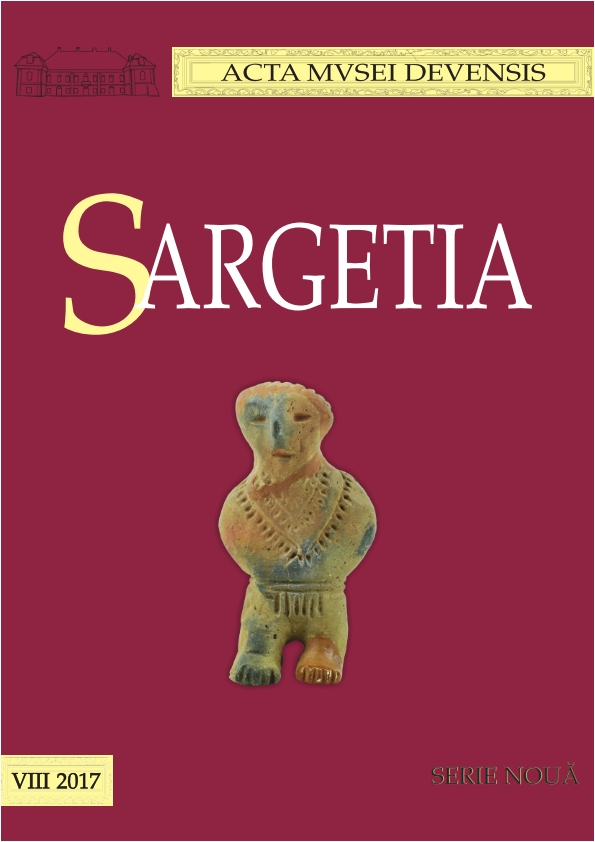Metamorfozele Cenuşăresei.
Etapele restaurării unui vas dacic din fier
Cinderella’s Metamorphoses. The Restore Stages of a Dacian Iron Vessel
Author(s): Sergiu-Sorin Popescu, Iosif Vasile FerenczSubject(s): History, Archaeology, Ancient World
Published by: Editura Altip
Keywords: restoration; iron; vessel; Dacia; Grădiştea Muncelului
Summary/Abstract: In 2003, the Dacian and Roman Civilization Museum in Deva bought an iron vessel from the owner of a hostel in Costeşti (Hunedoara County). He told us that the piece was found in Grădiştea Muncelului. This explanation could be true if we take into consideration another vessel of this type found on an iron tools and weapons depot from a smith workshop. It was excavated on a terrace in the ancient Sarmizegetusa Regia more than half a century ago (Pl. I)5. Although the vessel was strongly oxidized at the time, it was displayed in the salon of the hostel (Fig. 1). The pot was made of iron segments connected by rivets and the shape is very similar to that of situla type vessels with or without graphite. The piece was indexed on the treasure category of the Romanian National Patrimony.A few physicochemical analyses were done before the restauration method was chosen. The restauration process was acomplished in the laboratories of the National History Museum in Bucharest. After the analysis, a treatment meant to stabilize the corrosion byproducts was applied to the artefacts7. It consists of the usage of a solution of anhydrous sodium sulfite and sodium hydroxide. This method was tested and used for a long time in the laboratories of great western museums8, and it was adopted by Romanian specialists in the ’80-’90s.The object was sunk five times in the working active solution, in a vessel specially purchased for this. This process took five months (almost 800 hours, without weekends)11.After every halt of the steamer/vessel system and return to the room tempreture, the piece was mechanically cleaned using adequate tools. Afterwards it was sunk again, for the stabilisation treatment (Fig. 3). After finishing the process of the stabilization of the corrosion byproducts of the iron vessel and neutralising the sulfite solution, we started the next stage. The vessel wall was fallen on the inside and it was supported only by a small part of the wall, around the middle (Fig. 4), with the width of five centimeters.During the working process we tried to sketch the vessel in my notebook in order to capitalize the manner in which its component pieces were made (Fig. 5). After completion, the vessel rise with about two centimetres, so that now it has 38 centimeters. We tried to stabilize the wall as closely as possible to its natural position. That is why, for the completion and reinforcing of the wall we planned and done the operation of strenghtening the filling material.The restoration and chiseling of the walls imposed a schedule of six hours/day, from the 17th of November to the 15th of December 2016. At this stage cca 45 syringes of 24 mL of epoxy resin were prepared, in average 4 syringes/day on a period of eleven days. After each strenghtening of the resin we polished the redundancy using adequate tools to obtain the missing wall. A Silicon membrane (Fig. 8) was placed in the interior of the vessel, before the fibreglass.The cromatic integration of the resin was made in the nuance of tannin, in which the vessel was preserved, due to the color of iron oxide. By being restored as we have just described, the artifact received a new chance at life, at having an aspect and a strenghtened structure, and the hope of being appreciated by the public. Now, the vessel has its original shape and a high of 38 cm. The rim is inclined towards the interior and we can see that, on the upper part, the walls were decorated by two veins.The Aquisition and restoration of the artefact described by us enriched the Dacian and Roman Civilization Museum’s collections by a valuable piece. Short time after its return in town, in January 2017, it was exposed in the main hall of the Magna Curia Palace, on the “Exhibit of the month” programme. On this occasion, it was received with interest by the public of Deva. We also intend to exihbit it on a privileged position on the main exhibition of the museum which will be organised soon.
Journal: Sargetia. Acta Musei Devensis
- Issue Year: 2017
- Issue No: 8
- Page Range: 453-471
- Page Count: 19
- Language: Romanian

